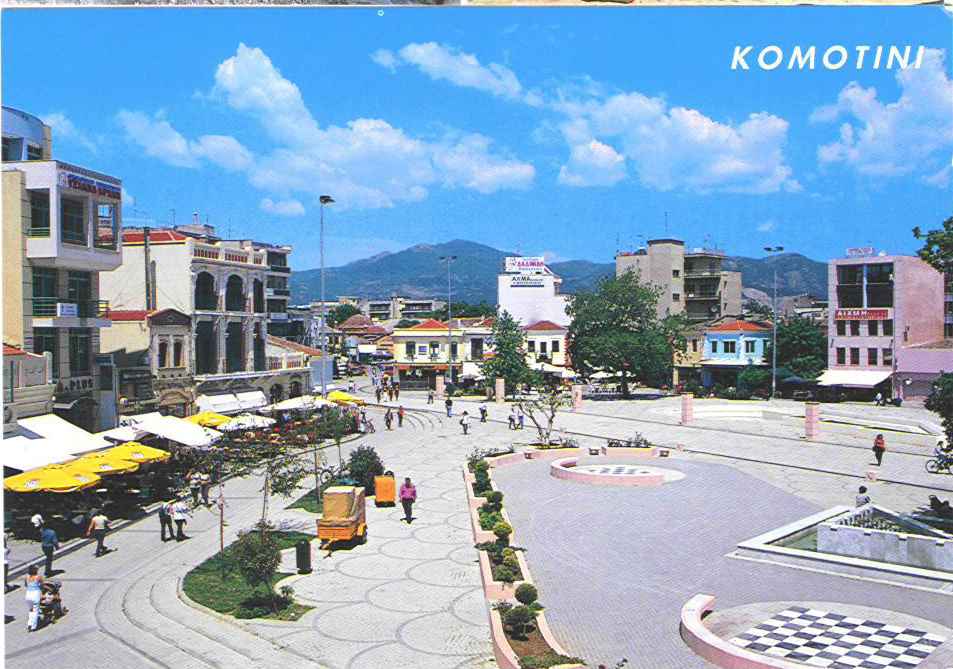|
The city of Komotoni
The capital of Thrace, with a population of
37,298 (1991 census), Komotini is the seat of the District Council of
Eastern Macedonia and Thrace, capital of the prefecture of Rhodope and the
province of Komotini, and the seat of the Municipality of Komotini, which
includes the villages of Yfandes, Ifestos, Paradhimi, Mesohori, and Mikro
and Meghalo Kranovounio. It is an important commercial, economic,
cultural, and administrative centre and offers all the modern conveniences
and facilities to be found in any other provincial city. Komotini is also
the seat of the Metropolitan of Maronia and Komotini, the Prefect of
Rhodope, the Democritus University of Thrace, the Court of Appeal of
Thrace, and various Iocal public services, organisations, banks, and
businesses.
The region of Rodopi and the city of Komotini are meeting points for
different civilizations .There are multi-cultural areas with a large
Muslim population which is the only officially recognized minority in
Greece. It also hosts immigrants (coming mainly from the neighbouring
Balkan countries) and Pontain-Greeks (repatriates) from ex-USSR Republics.
Thrace is also an entrance point for refugees as it borders Turkey to the
East and Bulgaria to the North.
The city is 32-38 m above sea-level and mostly flat. In the northern
districts around Ayia Varvara St. the terrain starts to rise gently up to
the southern fringes of the Rhodope Mountains. The layout of the streets
is irregular and labyrinthine, particularly in the Old Town, in sharp
contrast to the former refugee settlements and the district of Nea
Mosynoupoli.
There is little tourist activity here, though Komotini
has been a transit point to and from the East since time
immemorial.
The River Boukloudzas used to flow through the city and
cause considerable damage when it flooded. It was diverted in the early
1960s and its bed was filled in a little later: its old course is now a
long avenue bearing the successive names of (from the Xanthi entrance)
Archbishop Makarios, Ypsilandis, Democritus, Orpheus, and
Democracy.
Sad to say, when the bed of the Boukloudzas was filled
in the city's past was buried with it. "Europeanising" trends swept away
Komotini's traditional features, particularly those arising out of an
Eastern influence. The vanishing cobbled streets took with them the
memories of that other Komotini which the younger generation knows nothing
about: the covered market, the old inns, the baths, the tanneries, and the
traditional social relations of yore. The legendary gardens which the
Turkish traveller Evliya Tchelebi described in the seventeenth century and
which still survived until a few decades ago are now gone for
ever.
This over-hasty "modernisation" (in the worst sense of the
word) has made it impossible properly to assess all aspects of the city's
age-old history.
Nevertheless, in defiance of the times, a few
secret corners still preserve memories of yesteryear: latticed windows,
spacious courtyards and high protective walls, long-forgotten costumes,
and above all human faces, living images of that other, futureless,
Komotini, which still struggles passionately against the dizzying swirl of
development. The secret charm of the Thracian capital...
|


